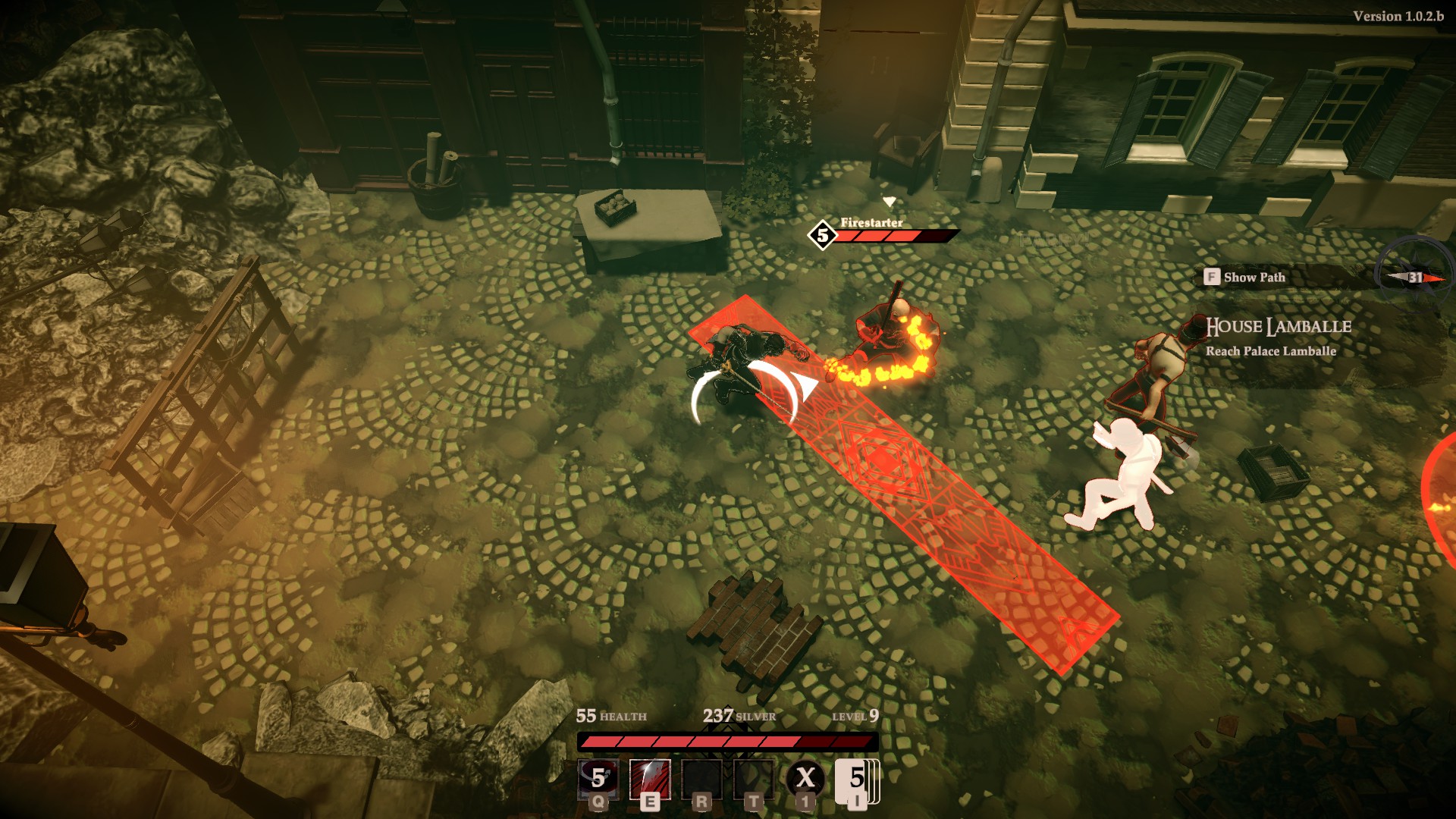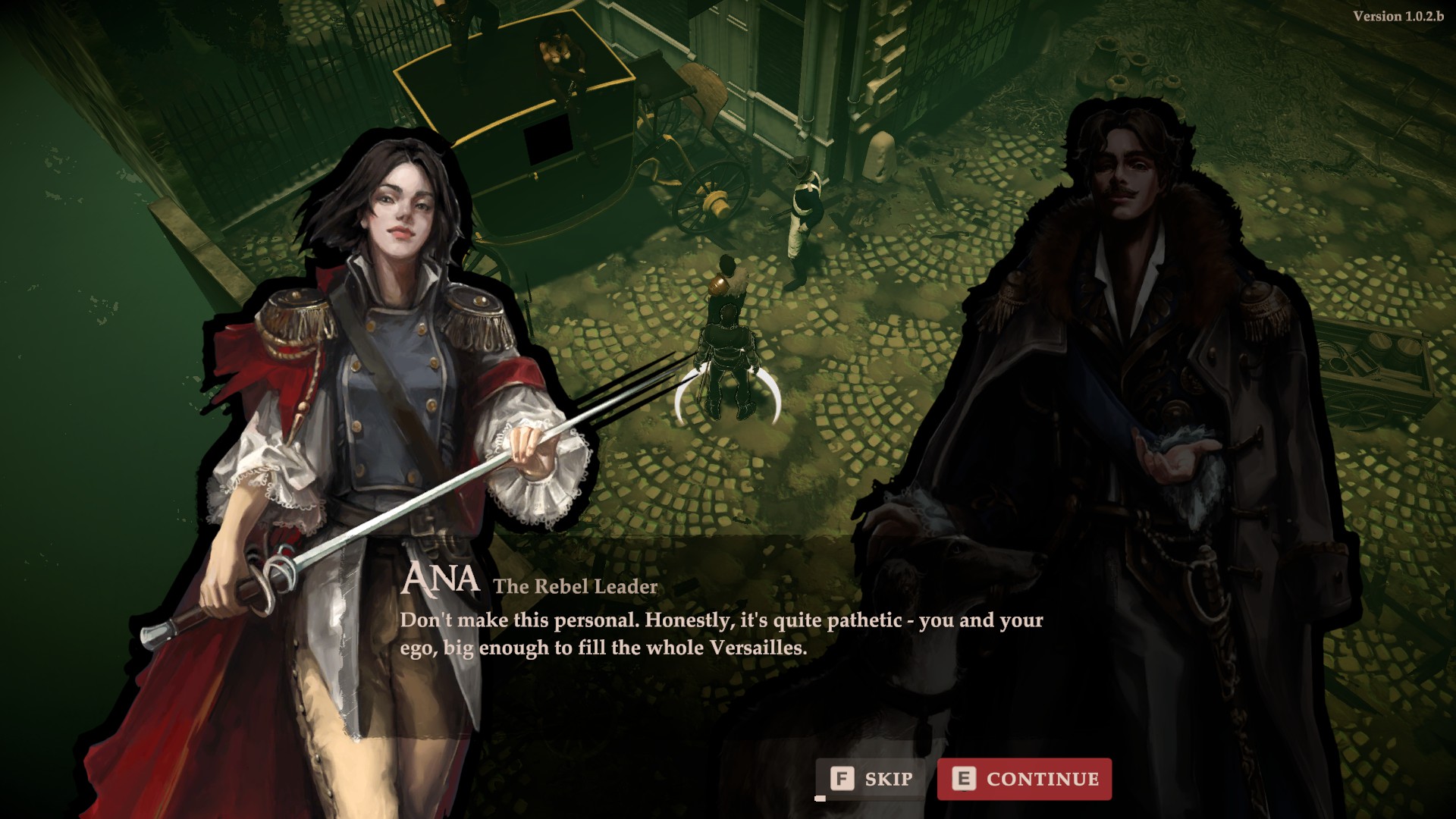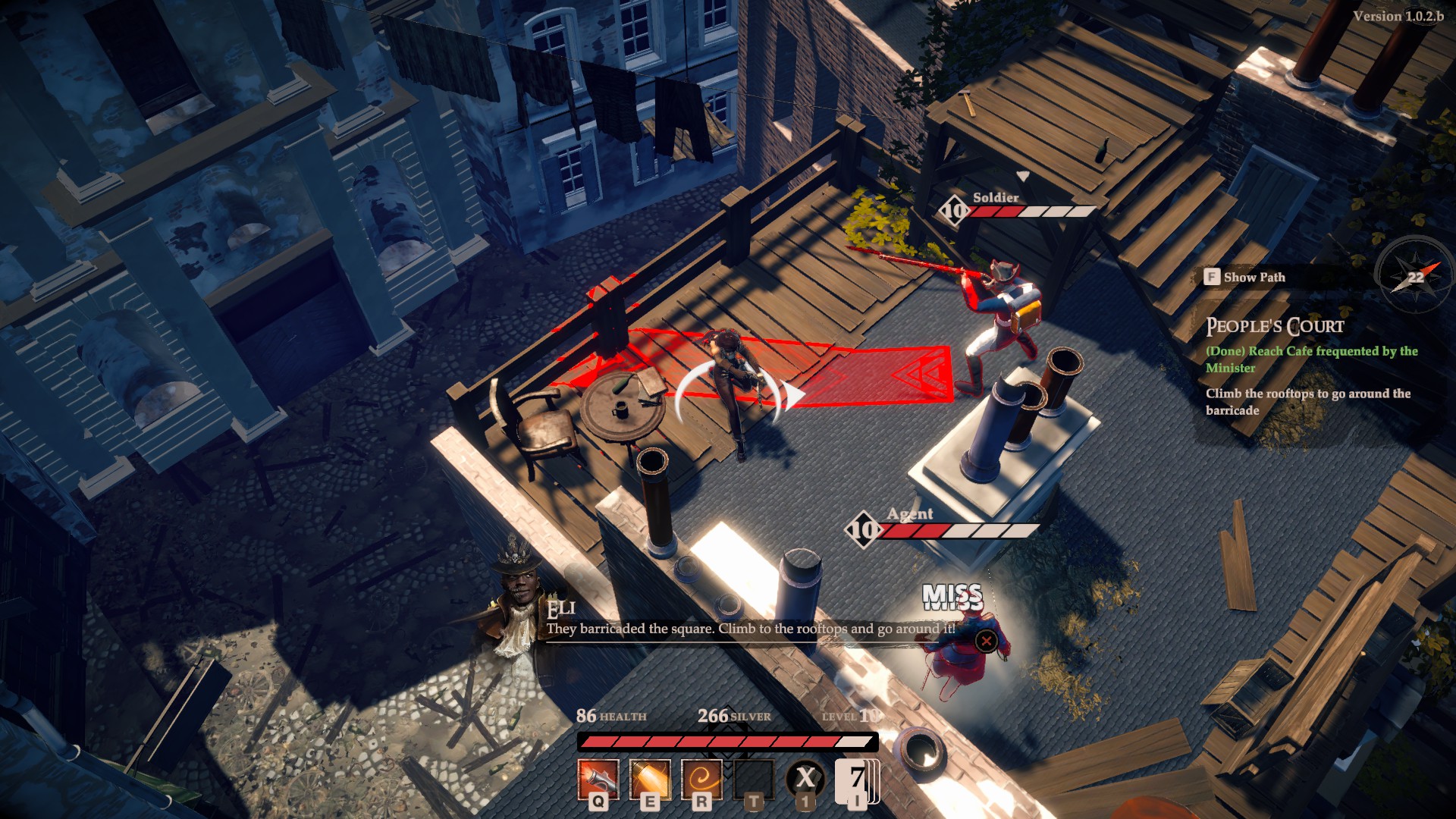Liberte review
2023-08-11 by George P
Reviewed on
PCPlatforms
Nintendo Switch, Playstation 4, Microsoft Windows, Xbox One
Developer
SuperstaticPublisher
Anshar Publishing
18th Century Hack-and-Slash
Liberte is an isometric hack-and-slash roguelike that uses a combination of deck-building mechanics as its core gameplay loop and progression system. Welcome to a French Revolution like one, you have never encountered before. You wake up in the shoes of Rene, a hardened warrior whose memory has been shattered and whose recollection of the day’s events has been completely erased. The ethereal whispers of a cosmic entity echo through the desolate ruins of a grand hall. An abominable fleshy substance spreads through the cracks of the fallen stones like a contagious disease. The haunting voice guides you through the ravaged streets of Paris and toward a secret underground temple. You quickly learn that the devastation present in every corner of the city was triggered by a supernatural event that had disrupted the country’s Coronation Day earlier that day. In the aftermath of the destruction, four factions struggle to use the ongoing power vacuum to their advantage and ultimately take over Paris. While fighting to maintain a balance between the forces vying for control of the city, Rene will also have to piece together previous events and uncover the enigmatic voice’s true intentions.
These intriguing story elements are well-presented and Liberte does a great job at delicately establishing a mysterious aura at the very beginning of the game. Beyond the story, Liberte also reels you in early on with its snappy and fast-paced combat system as well as its deck-building twist. For its combat base, the game equips you with only three actions consisting of a basic attack, a dodge, and a roll. The controls around these core actions feel fluid and responsive which of course are fundamental requirements for a quality hack-and-slash title. However, the combat system is far less barebones than it originally appears. Liberte develops gameplay complexity through its smart and interesting deck-building system. As someone who has played countless deck-builders, I can confidently say that Liberte manages to masterfully craft engaging card mechanics and cleverly implement them in its core combat and progression loop.

Card-Based Revolution
Following this bouquet of compliments and commendations concerning Liberte’s deck-building gameplay loop, I think it is worth conducting a more in-depth analysis of how a union of elements makes the game’s challenging formula work. I believe there are two foundational traits that generally make card games highly appealing to many players including myself: strategic resource management and unpredictability. The difficult question that a designer of such a game has to answer is how can these essential card game aspects be translated and integrated into a hack-and-slash experience. The way Liberte answers that question can only be described as brilliant. Each run begins with you selecting a deck. In the very beginning, you will only have access to the basic pre-built starter decks. As you advance through the adventure you will have the chance to unlock new cards and craft a deck out of your own ingenuity. As you progress through a run you will draw two cards from your deck every time you level up.
This is the part where the game’s roguelike dimension acts as the catalyst for a successful formula. Liberte’s roguelike nature guarantees a constant stream of unpredictable moments that maintain a sense of freshness between runs. It is important to note that designing the mechanics of randomness to be enjoyable and engaging is no small feat. It is well known that RNG systems can very often feel unfair and infuriating. The way Liberte ensures that RNG never undermines the player’s agency is by very cleverly linking randomness with the strategical process of managing a limited set of resources. In order to “play” a card you will first have to discard cards of equal mana cost. For example, if you want to activate a 5-mana card you will have to first discard either another 5-mana card or a combination of cards that add up to 5 (e.g., a 2-mana card plus a 3-mana card). Through this very simple mechanic, the game is able to develop a significant level of depth and complexity that’s smoothly linked with the unpredictable character of card games.

Every time you draw two random cards you will have to evaluate your options, your strengths, your synergies, as well as your weaknesses, and discard accordingly. Cards can be classified into three main categories. Active cards that when played are equipped as permanent abilities that can be activated between cooldowns. Talent cards that provide a permanent passive trait to your hero. And consumable cards that provide effects with a limited set of activations. The variety of potential choices to assess and balance makes Liberte’s resource management both challenging and enjoyable. This is further enhanced by the fact that, during a run, you can discover unique cards that are not part of your main deck. For example, you will occasionally encounter different kinds of markets throughout the city. Safe areas where you will be presented with a plethora of cards available for purchase. These can range from basic healing items to combo-based passives, to intricate abilities. Market cards can be bought using silver, a temporary currency that provides an additional layer of depth to resource management.

A Fragmented World
Together, all the above elements create a highly engaging deck-builder that, when combined with Liberte’s snappy combat, produces a very fun and quite addicting core gameplay loop. Unfortunately, outside of these core systems, the game’s other components do not feel as well-thought-out or cleverly linked together. The level design is the most obvious offender in that regard. The “world” of Liberte is nothing more than a series of small and disjointed closed-off areas that you progress through in a linear order during a run. Most of these areas offer nothing in terms of gameplay flavour and are more often than not almost identical corridor-like sections. Additionally, this model of level design offers absolutely no sense of exploration or discovery. The same pattern of fragmentation and a blurry design vision is visible in many other parts of the game, such as the story. Remember the various unique ideas and aspects of intrigue and mystery that can cleverly capture a player’s attention at the beginning of the game? Well immediately after the prologue is over, these captivating elements are entirely replaced with a dry, formulaic, and time-gated approach to storytelling and worldbuilding.
It is apparent that many of these problematic design choices were made with the intention of heavily increasing replayability. This is even more clear when one considers the fact that the game is remarkably grindy. To acquire a new card for example you need to first find its blueprint (which has a low chance to drop) and then gather a sufficient amount of crafting material in order to put it in your deck. This is only one of the numerous cases where the game places a tedious grind barrier that makes the experience less enjoyable only to artificially pad out the playtime. Liberte is an interesting example of how designing a game obsessively around replayability can backfire and produce the exact opposite of the desired result. Instead of encouraging players to maintain their interest in the game, systems of replayability can feel grindy, dull, and disjointed. These systems can ultimately reduce player engagement and result in a lower average playtime. This was certainly my experience with Liberte as I felt that many of the choices that were supposed to keep me engaged were actually undermining the game’s pacing, its worldbuilding, as well as the overall experience.
Liberte is an isometric hack-and-slash game that contains a tight and enjoyable combat system as well as a highly engaging roguelike deck-building loop. Unfortunately, multiple problematic design choices outside the core gameplay undermine many of Liberte’s other elements such as progression, pacing, level design, and storytelling.